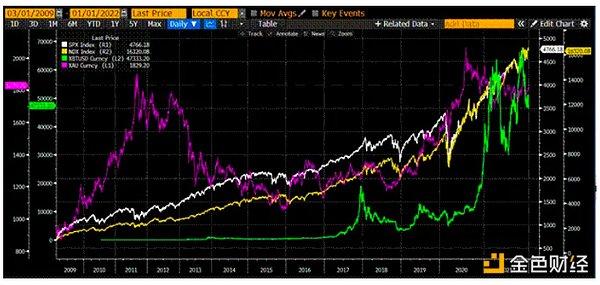Author: Frank, PANews
Trillion-dollar trading volume, 60% market share in the perpetual contract market, and an average of $400 million in on-chain liquidation per day - the decentralized exchange Hyperliquid, established less than two years ago, is using a series of disruptive data to erode the contract market of centralized exchanges.
Whales are performing "life-and-death gambles" with 50x leverage here, institutional funds are frantically sweeping orders with low fees, while retail investors remain cautious due to the lack of token varieties. While Binance and Coinbase still dominate the industry's discourse, Hyperliquid, with its extreme efficiency and coexisting risks, has opened up a new battlefield for the DEX counterattack. However, the "turtle-speed" Dutch auction listing mechanism and the plight of the governance token HYPE's halving also make this disruption full of variables.
Trading volume exceeds one trillion dollars, Hyperliquid becomes the "contract dark horse"
After the airdrop in 2024 ignited the market, Hyperliquid's contract trading volume has risen exponentially, completely breaking the industry's "post-airdrop recession" curse. Instead, in the recent volatile market conditions, Hyperliquid has firmly established its position as a top trading platform.
Data on March 5 shows that Hyperliquid's total trading volume first exceeded $1 trillion. According to Coinglass data, Hyperliquid's contract trading volume on that day was about $8.5 billion, ranking sixth among all exchanges, only behind Binance, OKX, Bitget, Bybit, and gate.io. Binance's contract trading volume was about $91.7 billion, and the gap is still significant, but Hyperliquid seems to have become a new force that Binance cannot ignore.
According to data from hypurrscan, Hyperliquid's annualized fee revenue reached $746 million, while Coinbase's total trading revenue in 2024 was $4 billion.


Among decentralized exchanges, Hyperliquid has become the leader in the perpetual contract market. According to analyst WarDaddyCapital's data on February 8, Hyperliquid's market share in perpetual contracts has reached 60.5%, compared to only 33.2% on November 1, 2024, and less than 2% in March 2023. This growth rate is unparalleled among decentralized exchanges.

The new casino for whales under the Trump trade
Hyperliquid's rise is inseparable from institutional and high-net-worth traders. Especially recently, the frequent large orders by whales have sparked market discussions, and Hyperliquid seems to have become the public arena for whales to open positions, including some unconventional and skillful smart money cases.
On March 2, before Trump announced the inclusion of BTC, ETH, SOL, ADA, and XRP in the crypto asset strategic reserve, a whale leveraged $6 million in assets 50x long on ETH and BTC, with an entry price of $2,197 for ETH and a liquidation price of around $2,149. After the order was placed, ETH price dropped to a low of $2,171, nearly liquidating the position. Fortunately, the market surged with Trump's positive news a few minutes later, and the user ultimately profited over $6.8 million that day. Many on social media believe this extreme operation may have been done by an insider close to Trump. However, Coinbase executive Conor Grogan later denied this, finding that the funds came from a phishing scam and the user was from the crypto gambling platform Roobet. This risky operation seems to be just an addict's thrilling gameplay.
In addition to this extreme speculation, some whales' long-term holdings have also gained huge profits under observation. According to on-chain analyst @ai_9684 xtpa, a whale opened a 50x short Ethereum position in January at $3,169, with a maximum unrealized profit of over $78 million. As of March 5, the order is still open, with an unrealized profit of $69 million. This user has become the most profitable on Hyperliquid. According to information provided by social media users, the address belongs to the new stablecoin protocol Resolv, which may be an order from their hedge fund.

In addition, news of whales spending millions of dollars to open positions on Hyperliquid is also common. From the data, the average individual user contribution to Hyperliquid's trading volume is about $2.56 million, which also indirectly reflects the different user structure. Under the recent market volatility, the enthusiasm of whales for opening positions has been high, and Hyperliquid's open interest has remained at a high level, staying above $3 billion since December 2024.

This phenomenon is closely related to Hyperliquid's low-fee strategy. For example, on March 5, Hyperliquid's funding rates for BTC, ETH, and SOL were significantly lower than Binance and Bybit, which is a relatively sensitive factor for users with large capital. In terms of trading fees, Hyperliquid is also lower than most mainstream exchanges. In addition, on-chain contracts are more transparent and fair than centralized exchanges, which is another reason why many large traders choose Hyperliquid.

With the participation and activity of whales, Hyperliquid also seems to be becoming the largest on-chain liquidation venue. Since the end of February, Hyperliquid's daily liquidation amount has basically remained above $400 million. Exchanges like Binance and OKX have not disclosed their full liquidation data to Coinglass, so it's impossible to make a direct comparison. On March 6, Bybit, which publishes full data, had only $80.61 million in contract liquidations in the past 24 hours, far lower than Hyperliquid.
Dutch auction dilemma: single-chain ecology and cold retail
The trading of whales has indeed brought a lot of attention to Hyperliquid, but to attract more retail investors, it seems to require other logic, such as listing more new tokens or creating more wealth myths. As of March 5, Hyperliquid's cumulative user base was only 390,000, and the number of spot trading tokens was only 82, far lower than other mainstream exchanges. Therefore, the limited tradable assets may be the main reason why Hyperliquid has difficulty attracting more retail investors.
As a decentralized exchange, Hyperliquid's token listing auction mechanism is vastly different from other exchanges. Hyperliquid adopts a Dutch auction mechanism, which on one hand greatly reduces the cost for projects to list, theoretically bringing in more potential projects. On the other hand, it also has certain flaws, as some well-known projects have no motivation to initiate auctions, leading to a relatively limited selection of spot trading pairs on Hyperliquid.
Additionally, each auction round lasts 31 hours, which means a maximum of 282 projects can be listed through auctions per year. Meanwhile, some time-sensitive tokens may find it difficult to quickly occupy the market through this auction mechanism.

Hyperliquid has also tried to expand the on-chain token varieties by building products similar to Pump.fun, launching HFUN, but the effect seems to be minimal, with the highest market cap token only $245,000.
Among the relatively thin token categories, Hyperliquid's own governance token HYPE has become the only product that can support the main beam. Taking March 5 data as an example, the trading volume of HYPE is about $320 million, accounting for about 3.7% of the entire platform's trading volume. However, the recent trend of HYPE has continued to create new lows as the overall market has weakened, with the lowest drop to $15.3 on March 4, with a market value of about $5.59 billion, a maximum drop of about 56.5% from the high point.
In addition, in terms of decentralized governance, Hyperliquid also faces a lot of doubts. The "single-machine mode" has always been the core criticism of the naysayers against Hyperliquid. Of course, this criticism is partly because the token is only listed on its own exchange, and partly because as a public chain, it still adopts a permissioned validator access method, which does not seem "public". But on March 5, the Hyperliquid Foundation issued the latest announcement, announcing that after the next network upgrade, the mainnet validators will no longer need permission to join. This can be seen as a positive feedback to the "single-machine" criticism.
Overall, Hyperliquid seems to have already occupied a place in the whale contract market. But there is still a long way to go in terms of retail growth. Perhaps as the degree of decentralized governance of the network increases, through new proposals in the listing process and other operational ideas, this exchange may go further as a new force.







